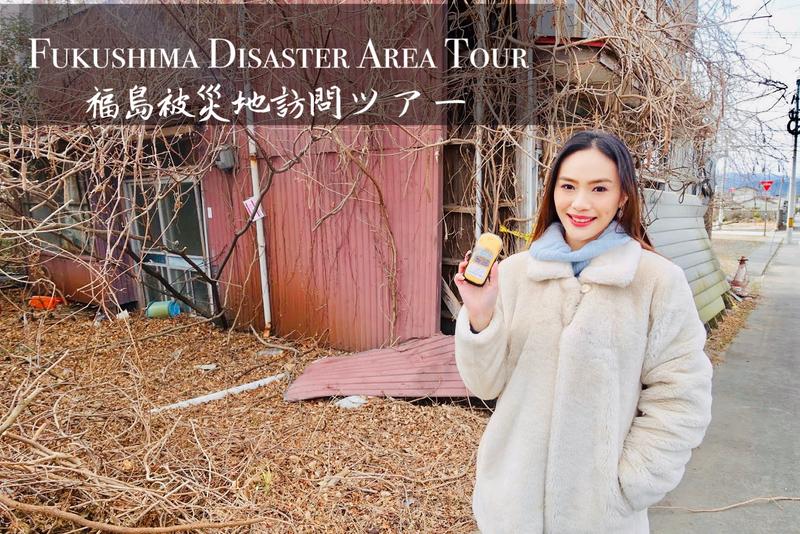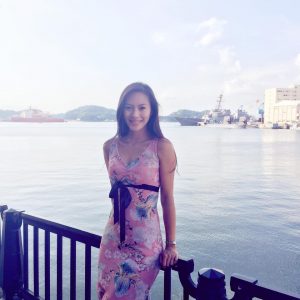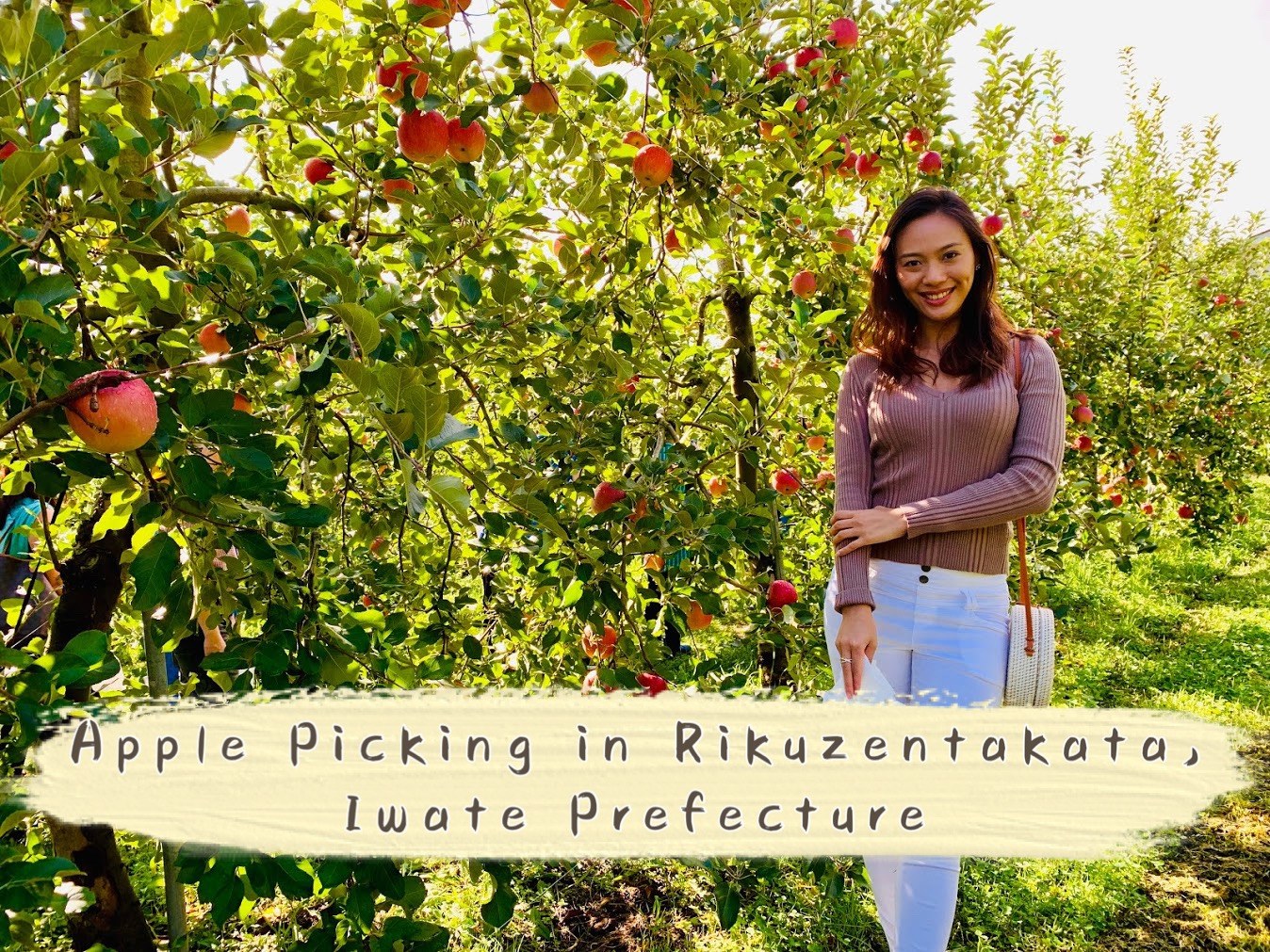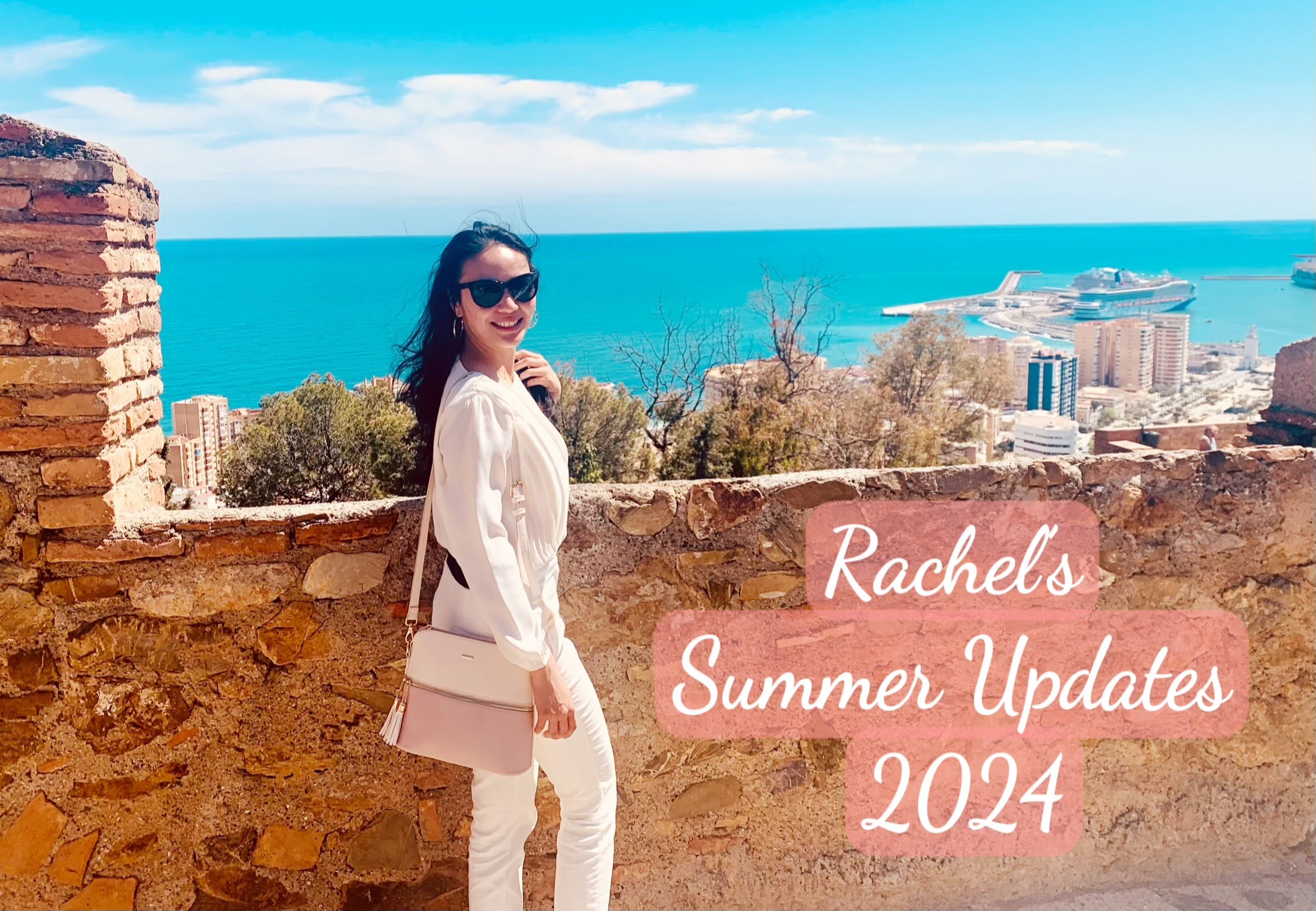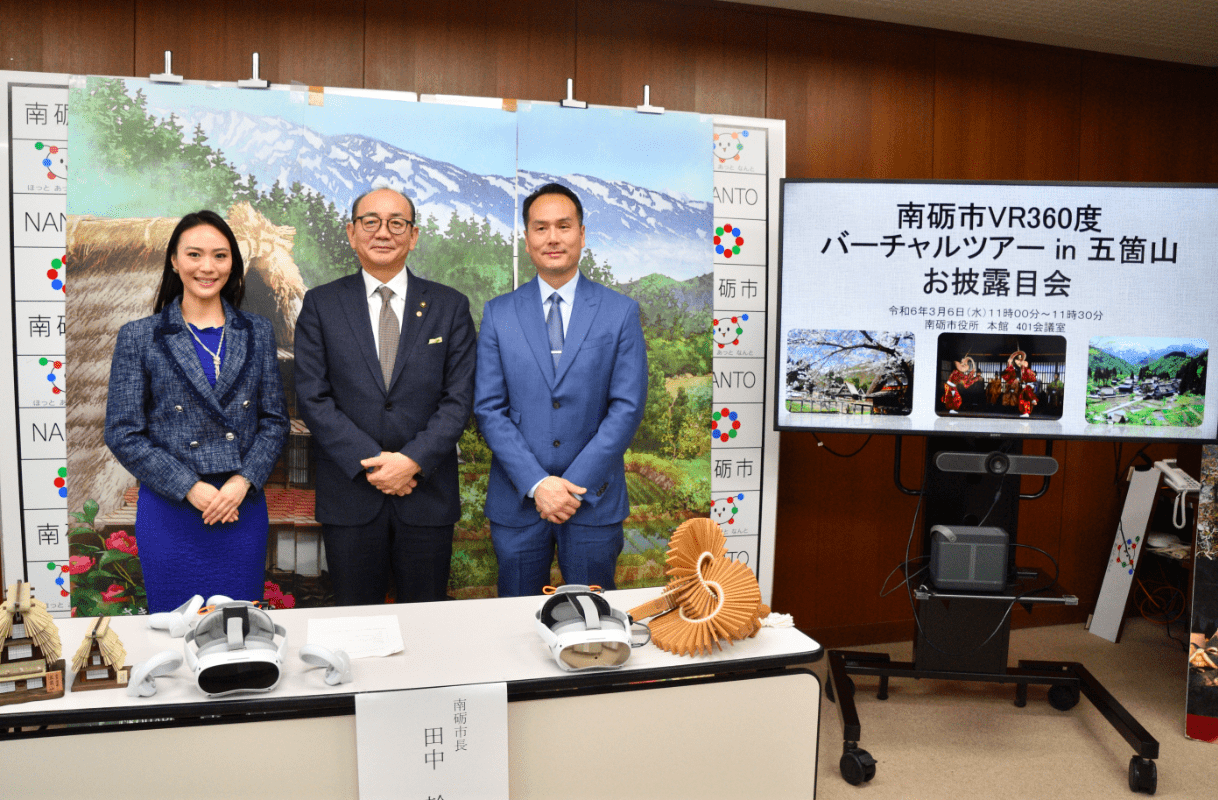Witness with Your Own Eyes: 9 Years after the Fukushima Daiichi Accident
自分の目で目撃:福島第一原発事故から9年
The world was flooded with images of towns inundated by swirling waters after one of the most powerful earthquakes and tsunami ever recorded hit Japan on March 11, 2011. As the extent of the destruction revealed itself on news channels all over the world, it became clear how many thousands of people were missing—including more than half of a locality’s population in some cases. To add to the devastation, anxiety related to the nuclear reactor meltdown and radiation contamination pervaded global media seemingly without end.
2011年3月11日にこれまでに記録された最も強力な地震と津波の1つが日本を襲った後、世界のメディアは渦巻く水によって浸水された町の画像であふれました。 何千もの人々が行方不明になり、中にはそれが地域全体の人口の半分をも上回る場所さえありました。 荒廃に加えて、原子炉のメルトダウンと放射能汚染に関連する終わりのない不安を、グローバルメディアが配信しました。
Catastrophic Earthquake… Powerful Tsunami… Nuclear Reactor Meltdown… Radiation Contamination… Fukushima… Another Chernobyl Disaster in Japan?
The above key phrases made international headlines, and were on the tips of everyone’s tongues.
What comes to your mind when you think about the Fukushima Daiichi Disaster?
壊滅的な地震…強力な津波…原子炉のメルトダウン…放射能汚染…福島…日本でのチェルノブイリ災害になりそう?
上記の重要なフレーズは国際的な見出しとなり、すべての人の話題に昇りました。
福島第一原発事故について考えるとき、何が思い浮かびますか?

Fukushima Disaster Area Tour
福島被災地訪問ツアー
Almost 9 years have passed since the disaster and ensuing months of panic, and the world has gone quiet on news of Fukushima and the 3/11 mega-disaster. The second worst nuclear accident in history faded in memory as the rest of the world continued with their lives. For victims in Fukushima, however, the story has not yet ended. As of 2020, most of the evacuation orders (excluding difficult-to-return zones) have been gradually lifted and returnees have been trickling back to live in their old homes. Misinformation about the nuclear crisis and radiation fallout still cloud Fukushima to this day.
震災から数カ月のパニックが発生してから9年が経過し、世界では福島と3/11の巨大災害のニュースが静かになりました。 歴史上2番目の最悪の原発事故は、今では私達が日常生活を続けていく中で、被災者のことを記憶から消えていっています。 しかし、福島の被災者にとって、話はまだ終わっていません。 2020年1月現在、避難指示のほとんどが解除され、帰還者は元の家に住んでいます。 核危機と放射性降下物に関する誤報は、今日まで福島を原爆雲のように曇らせています。
To understand the magnitude of loss that the disaster area has faced, I joined the Fukushima Disaster Area Tour operated by Japan Wonder Travel. I hope to explore the truth behind what is happening now after years of recovery, and how the locals are rebuilding their hometowns.
被災地が直面した損失の大きさを理解するために、Japan Wonder Travelが運営する福島被災地訪問ツアーに参加しました。 長年をかけて回復した後、現在何が起こっているのか、そして地元住民が将来のために故郷をどのように再建しているかの背後にある真実を探求したいと思います。

| Quick Facts on the Fukushima Daiichi Disaster Following a major earthquake, a 15-metre tsunami disabled the power supply and cooling of three Fukushima Daiichi reactors, causing a nuclear accident on 11 March 2011. All three cores largely melted in the first three days.The accident was rated 7 on the INES scale, due to high radioactive releases over days 4 to 6, putting it on the same scale of nuclear danger as the 1986 Chernobyl accident.  After two weeks, the three reactors (units 1-3) were stable with water addition and by July they were being cooled with recycled water from the new treatment plant. Official ‘cold shutdown condition’ was announced in mid-December. Apart from cooling, the basic ongoing task was to prevent release of radioactive materials, particularly in contaminated water leaked from the three units. Three Tepco employees at the Daiichi and Daini plants were killed directly by the earthquake and tsunami, but there have been no fatalities from the nuclear accident. There have been no deaths or cases of radiation sickness from the nuclear accident, but over 100,000 people were evacuated from their homes to ensure this. With over 18,000 people dead or missing in the tsunami and thousands relocated, 3/11 – as it is commonly called by people in Japan – remains a deeply traumatic moment eight years later. Source: World Nuclear Association |
Day Trip to Fukushima Disaster Area
福島被災地への日帰り旅行

At 7:50AM, I meet my guide outside Tokyo Station.
午前7時50分に、東京駅の外でガイドさんに会います。
The drive to our destination, the disaster area in Fukushima, would take about 3 hours.
目的地である福島の被災地へのドライブには約3時間かかります。

During the drive to Fukushima, the tour guide explained the schedule of the day as well as dispelled some of our misperceptions about Fukushima. We would drive through Difficult-to-Return Zones and visit towns affected by the disaster, getting off the van only in inhabitable areas where the evacuation order has been lifted.
福島へのドライブ中、ツアーガイドはその日のスケジュールを説明し、福島についての私たちの誤解を払拭しました。
帰還困難区域を通り抜け、災害の影響を受けた町を訪問し、避難命令が解除された居住地域でのみ車から降りました。
Misperception #1: Not all of “Fukushima” is the Disaster Area
誤解#1:「福島」は広く、全域が放射能の影響を受けているわけではない

The area affected by the accident is mainly the coastal area of Fukushima Prefecture within a 20km radius from the Daiichi nuclear plant, and NOT the city of Fukushima which is 60km from the coast and has always been safe.
Unfortunately, many people mistakenly associate the entire Fukushima Prefecture with the Daiichi Disaster, and presume that the whole area is exposed to radioactive contamination.
まず、事故の影響を受ける地域は主に福島県の第一原子力発電所から半径20km以内の沿岸地域であり、沿岸から60kmで常に安全である福島市ではないことを強調する必要があります。
残念ながら、多くの人々が誤って福島県全体を第一災害と結び付け、地域全体が放射能汚染にさらされていると推測しています。

The important point to understand is that Fukushima Prefecture is the third largest prefecture in Japan (13,783km2, behind Hokkaido and Iwate Prefectures), and is home to vast farmlands and delicious fresh produce as well as beautiful coastlines that were far removed and unaffected by the Daiichi accident. Many areas in the prefecture including Fukushima City, Aizu-Wakamatsu, Iwaki and Koriyama have always been accessible.
重要な点は、福島県は日本で3番目に大きい県(13,783km2、北海道と岩手県に続く)であり、広大な農地とおいしい新鮮な農産物、そして遠く離れて影響を受けなかった美しい海岸線があることです。 福島市、会津若松市、いわき市、郡山市など、県内の多くの地域は常にアクセス可能です。

In fact, as of 2019, the evacuation designated zones affected by the nuclear disaster declined to only 2.5% of the entire prefecture!
実際、2019年時点、原子力災害の影響を受けた避難指示区域は、県全体の2.5%まで減少しています!
Sadly, discriminatory treatment of Fukushima products persists and prices of foodstuffs from the region have not recovered to levels prior to 2011. Many countries and regions still continue to restrict imports of Japanese foodstuffs after 3/11, maintaining strict regulations, such as continued import bans on products from parts of Japan, including Fukushima.
悲しいことに、福島県の製品の差別的扱いが持続し、地域の食料品の価格は2011年以前のレベルまで回復していません。

Interviewed with a local Fukushima newspaper after my first visit to the Fukushima Agricultural Technology Center.
This is contrary to what is really happening on the ground. From my visit to the Fukushima Agricultural Technology Center in 2018, I learned that Fukushima products are shipped only after they clear tough screening against radioactive contamination, set at a more stringent level than official international guidelines. No Fukushima-grown rice, which is subject to blanket radiation screening, has exhibited levels of radioactivity that exceeded the government-set standard since 2015. Since 2013, no locally grown vegetables or fruit, which go through mandatory sample testing, have registered cesium levels above the official standard since 2013. Local fishermen operate in specified areas off the coast of Fukushima and catch a limited number of species. Arguably, products from Fukushima have less chance of radioactive contamination than from other parts of the world that do not conduct constant screening! The lack of public awareness about these safety levels need to be addressed by repeated efforts to share accurate information.
これは実際に地上で起こっていることとは違います。 2018年の福島県農業技術センターへの訪問から、福島県の製品は、公式の国際ガイドラインよりも厳しいレベルに設定された放射能汚染に対する厳重なスクリーニングをクリアした後にのみ出荷されることを知りました。包括的放射線スクリーニングの対象となる福島県産米は、2015年以降、政府が設定した基準を超える放射線レベルを示していません。地元の漁師は福島県沖の指定された地域で操業し、限られた数の魚を漁獲しています。おそらく、福島県の製品は、絶えずスクリーニングを実施していない世界の他の地域よりも放射能汚染の可能性が低いです!これらの安全レベルに関する一般の認識の欠如は、正確な情報を共有するためのたゆまぬ努力によって対処される必要があります。
Easily reached from Tokyo, Fukushima has everything Japan is famous for, including relaxing onsen, nature and powder snow. Fostering unique traditions of food and culture, the fertile lands of Fukushima produce some of Japan’s best farm produce and sake. Read my other blog articles on harvesting fresh vegetables at the Yoshinoya Farm Fukushima, a tour of the Asahi Brewery Fukushima with pure water and fragrant hops, as well as making my own tofu with an expert from Fukushima’s Kanouya Tofu to discover many other lesser-known attractions in the region!
東京から簡単にアクセスできる福島には、リラックスできる温泉、自然、パウダースノーで覆われた山など、日本で有名な色々な魅力的なものがあります。福島の肥沃な土地は、美味しい食事と歴史深い文化の伝統を育み、日本一の農産物と酒を生産しています。 吉野家ファーム福島での新鮮な野菜の収穫や、純粋な水と香ばしいホップを使ったアサヒビール福島のツアーや、福島の「叶屋豆腐」で自分で豆腐を作り等、たくさんのあまり知られていないものを発見する地域のアトラクションについては、前のブログ記事をぜひご覧ください!

Harvesting Napa Cabbages at the Yoshinoya Farm Fukushima!
Misperception #2: Radiation Levels and Health Risk
誤解#2:放射線レベルと健康リスク

At the beginning of the tour, each participant is handed a Geiger counter to monitor radiation levels throughout the day. In Tokyo, my Geiger counter showed average radiation levels measure 0.15~0.2 uSV/h (microsieverts/hour), which is about the world average for natural background radiation according to the World Nuclear Association.
ツアーの開始時に、各参加者にはガイガーカウンターが渡され、一日を通して放射線レベルを監視します。
私のガイガーカウンターによると、東京では、平均放射線レベルは0.15〜0.2 uSV / h(マイクロシーベルト/時)です。

As you will see later on, except in some hotspots in “difficult-to-return zones,” radiation levels in Fukushima near the Disaster Area — and the associated risk of health damage — are not much different than elsewhere.
For reference, the amount of radiation every person on board a flight from Tokyo to New York is 100x more than the total amount we were exposed to during the tour. In other words, I would have to go on the tour for 100 times to have the same radiation exposure as a round trip flight from Tokyo to New York.
下記の通りに、帰還困難区域内の一部地域を除き、被災地付近の福島の放射線レベル、及び関連する健康被害のリスクは、他の地域とそれほど変わりません。
参考までに、東京からニューヨークへのフライトに搭乗するすべての人の放射線量は、ツアー中に被曝した量の100倍です。
つまり、東京からニューヨークへの往復フライトと同じ被曝になるには、100日間ツアーに行かなければなりませんよ。

2015年9月5日現在の避難指定区域の地図。
The restricted areas in Fukushima after the disaster are divided into three zones: Difficult-to-Return Zone, Restricted Habitation Zone and Preparatory Zone for lifting of Evacuation Order. The colored zones on the map fans out to the northwest in the direction of the wind on that day of the nuclear reactor meltdown.
災害後の福島の制限区域の地図を、帰還困難区域、居住制限区域、避難命令解除準備区域の3つの区域に分けて示しています。地図上の色付きのゾーンは、原子炉のメルトダウンの当日、風の方向によって北西に広がっています。

Map of evacuation-designated zones as of April 1, 2017.
Evacuation orders for additional areas are expected to be lifted in March 2020.
2017年4月1日時点の避難指定区域の地図。
さらに2020年3月には新たな地域で避難指示が解除されます。
In some areas, schools have reopened and residents have been authorized to return to live in their old homes.
During the tour, we will witness the current status of revitalization of these areas.
一部の地域では、学校が再開され、居住者は以前の家に戻って住むことが許可されました。
ツアー中、これらの地域の活性化の現状を目にしました。
On the Road: Approaching the Disaster Area
災害地帯への接近

As we approach the disaster area in Fukushima, I have to admit I feel pretty nervous getting closer to the Fukushima Daiichi plant.
I am constantly checking my Geiger counter.
福島の被災地に近づくと、原子力発電所に近づくのにかなり緊張していることを認めざるを得ません。
私はガイガーカウンターを常にチェックしています。

We are able to spot cranes over where the Daiichi nuclear plant is located.
第一原子力発電所のある場所にクレーンを見ることができます。

Black storage bags containing contaminated soil in the distance.
遠くに汚染された土壌を含む黒い保管袋。
As we approach our destination, I spot many black storage bags piled up in various fields in the surrounding area. These bags are filled with contaminated soil and are waiting to be transferred to the Interim Storage Facility. This facility is necessary to safely and intensively manage and store the soil and waste until the final disposal. However, where and how they will be safely disposed is still subject to ongoing debate.
目的地に近づくと、周辺地域の色々な場所に積み上げられた多くの黒い収納袋を見ることができます。 これらの袋には汚染された土壌が入っており、適切な保管場所に移されるのを待っています。 それらがどこでどのように安全に処分されるかはまだ議論中です。

Thousands of black bags are yet to be transferred to the Interim Storage Facility.
数千の黒い袋は、適切な保管場所と廃棄場所にまだ移送されていません。

Occasionally, there would be a few seconds of heightened anxiety when the alarms on our Geiger counters went off as we drove through Route 6 in Difficult-to-Return Zones. However, the highest reading I recorded was just over 3.0 uSV (=0.003m㏜), which is still much lower than any dental X-ray, and only lasted a few seconds.
時折、国道6号線を通り抜けたときにガイガーカウンターのアラームが鳴ったときに、数秒間の不安が高まりました。 しかし、この時私が記録した最高の測定値は3.0 uSV(=0.003m㏜)をわずかに上回りました。これはどの歯科用X線よりもずっと低く、数秒間しか続きませんでした。

ほとんどの汚染された被災地を運転しているときでさえ、基本的な歯科用X線を実施した場合よりもはるかに少ない放射線量です!
Namie: “Ghost Town” Brought Back to Life
浪江:”ゴーストタウン”が復活

Our first stop was Namie town.
ツアーの最初の目的地は浪江町でした。

Although Namie Station is open to the public and functioning, it is mostly deserted.
駅は一般公開されており機能していますが、ほとんどが人がいません。
The guide explains that the station has effectively served as a terminus since the disaster, as trains are only permitted to arrive from and depart northwards, towards Sendai. The stretch that connects Namie to Tomioka town in the South is still inoperable as the tracks cross Difficult-to-Return Zones.
ガイドさんは、列車は仙台に向けて北からのみ発着することを許可されているため、駅は災害以来効果的に終点として機能したことを説明しています。 浪江駅と富岡駅を結ぶ区間は、帰還困難区域内を走るためまだ開通していません。

However, there is much to look forward to with the reopening of the train lines connecting Namie to towns in the south! The government recently decided for the tracks to be open again before the Tokyo Olympics 2020.
今後、南にある町と浪江をつなぐ列車の再開が楽しみです!
政府は、2020年の東京運転を再開する予定です。

With the trains back in operation, we may expect more people to visit Namie Station and the surrounding towns!
より多くの人々が浪江駅や周辺の町を訪れることを期待しているかもしれません!

A radiation monitoring post set up by the government in front of Namie Station indicates levels of ~0.2 uSV/h (similar to levels in Tokyo, and lower than the USA average of ~0.34 uSV/h according to the Nuclear Regulatory Commission).
浪江駅前に政府が設置した放射線モニタリングポストは、〜0.2 uSV / hのレベルを示しています
(東京のレベルに近く、米国の原子力規制委員会によると、米国の平均〜0.34 uSV / hよりも低い)。

Walking through the town, I felt like I had stepped into a real-life version of a post-apocalyptic landscape often featured in so many Japanese movies and anime. Aside from the occasional police car or fire truck run by a squadron of community volunteers to make sure their town stays safe, it sometimes seemed like I was the only person around for miles.
町を歩いていると、多くの日本の映画やアニメで見た黙示録的な風景の現実のバージョンに足を踏み入れたように感じました。
町の安全を確保するために時折パトカーやコミュニティボランティア隊が走る消防車を除けば、周りにいるのは私だけであるように思えました。

Not a Person in Sight: Walking along the deserted main streets through Namie town.
一人もいない:浪江町の人通りのない大通りに沿って歩く。
Broken Window to the Past: Peering into a restaurant abandoned in disarray, the harshness of the setting forces me to think about the pandemonium that erupted after the natural disaster and ensuing nuclear danger.
過去への壊れた窓:混乱して捨てられた家を覗き込むと、一見しただけでその厳しさが私を自然災害とそれに続く核の危険の後の大混乱について考えさせられます。

It was an eerie experience to walk through a town as if it were suspended in time. Many buildings remain derelict and untouched after the disaster.
時が止まってしまった町を時間内に歩くのは不気味な経験でした。 多くの家、学校、およびレストランは、災害後も遺棄されたままです。

I could still see the destructive impact of the disaster at restaurants around Namie that were evacuated just as they were preparing to open for business. Empty tables and chairs gather years of dust, and debris litters the floor inside. They serve as a constant reminder of what happened that terrible day…
震災当時の影響は、開業の準備をしていた浪江周辺のさまざまなレストランやバーで、今でも見られます。 空のテーブルと椅子は何年ものほこりを集め、内部の床にはゴミが散らばっています。それらはその当日に何が起こったのかを常に思い出させるものとして残っています…


In front of a deserted izakaya (japanese pub, top) and yakiniku (grilled meat, bottom) restaurant.
捨てられた焼肉レストランの前。
The haunting sight of children’s’ shoes at the entrance to their school, left untouched in lockers for over 8 years since the disaster. (In Japan, students change to “indoor” shoes upon entering the school. For these children, they never had the chance to change their shoes to head home before the disaster hit.)
学校の入り口にある子供たちの下駄箱は、震災から8年以上の間、片付けられずにいました。
My heart fills heavy thinking about how these kids had to bear the crushing weight of the possibility that they may be the last surviving members of their family during the evacuation.
私の心は、これらの子供たちが避難中に家族の中で最後の生き残った一人になるとしたら、どのような心理的な負担があるのだろうと考えると、とてもいたたまれない気持ちになりました。
Nevertheless, hope for rebirth is evident in this town, and residents are slowly rebuilding their lives. All of Namie’s former residents were scattered across Japan after the evacuation, but we are beginning to see the results of government efforts to urge people to return to their hometown.
それにもかかわらず、この町には再生の希望があり、住民はゆっくりと生活を立て直しています。 浪江の住民は全員、避難後に日本中に散らばりましたが、人々が故郷に戻るよう促す政府の努力の結果を見始めています。

Since the evacuation order was lifted in 2017, Namie residents have gradually begun to move back into and rebuild their former homes.
2017年に避難命令が解除されて以来、浪江の住民は徐々に元の家に戻り、再建し始めました。
Of the 21,000 former Namie residents, only about 1200 now (as of Dec 2019) live there since they have been allowed to return, including decontamination workers who work on sites nearby. Most of the returnees are elderly.
One of the main issues preventing families with children from moving into Namie is the lack of education. All schools in Namie had been shut down after the 3/11 disaster. Although a gleaming new elementary school has been opened by the Fukushima Prefectural Board of Education in 2018, young families are hesitant to uproot their lives again and return.
21,000人の元浪江住民のうち、近くの現場で働く除染作業者を含め、帰還が許可されて以来、2019年12月時点約1200人だけがそこに住んでいます。 帰還者のほとんどは高齢者です。
子どものいる家族が浪江に引っ越すことを妨げる主な問題の1つは、学校の問題です。 3/11の災害の後、浪江のすべての学校は閉鎖されました。 2018年に福島県教育委員会によってキラキラと光る新しい小学校が開設されましたが、若い家族は生活を再び最初から始めることにためらっています。

The Namie Post Office is open for residents to send and receive mail.
浪江郵便局は、居住者が使えるように開放されております。
We were fortunate enough for our tour visit to coincide with a local community day!
幸運にも、私たちのツアー訪問は地元のコミュニティ開放日と一致しました。

Blue skies welcome us as we arrive at the Machi-Nami-Marche, a neighborhood market next to the City Hall where Namie residents can gather with family and friends to enjoy local food, fresh produce, and shopping.
市役所の隣にある町市場に到着すると、青空が私たちを歓迎してくれました。町市場は、地元の食べ物、新鮮な食材、ショッピングを楽しむために浪江住民が家族や友人と集まることができます。

A Namie resident hands me a limited edition blanket with the well wishes for everyone to stay warm this winter.
地元の浪江の住人が、この冬を暖かく過ごしてほしいという願いを込めて、浪江限定の毛布を渡してくれました。

Interacting with some of the locals, I was moved by how brightly their confidence in and affection for their hometown shines through. They are unafraid, and are determined to work tirelessly towards the revival of Namie.
地元の人々と交流することで、彼らの故郷に対する自信と愛情がどれほど明るく輝いているかに感動しました。 彼らは恐れることなく、浪江の復活に向けてたゆまぬ努力をする決意です。

For lunch, I tried some Namie Yakisoba from a local food stall!
地元の屋台の浪江焼きそばをランチに食べました。
Namie Yakisoba, different from the usual yakisoba that you might find in Tokyo, is renowned for its thick noodles, sprouts, and pork slices, stir-fried in dark, thick sauce full of umami!
名物の“極太麺・もやし・豚肉・うまみたっぷり濃厚ソース”の「なみえ焼そば」を食べてみました!美味しかったです~!
Ranch of Hope
「希望の牧場」

The stop on the tour that left the strongest impression on me was the visit to the Yoshizawa Ranch owned by cattle farmer Masami Yoshizawa, which he has renamed the “Ranch of Hope” (Kibou no Bokujyou) after the disaster.
一番印象に残ったのは、牧場経営者である吉沢さんが所有する吉沢牧場を訪れたことです。彼は震災後に「希望の牧場」と改名しました。

At the Yoshizawa Ranch office.
Yoshizawa-san shared with us his despair when he realized cattle were starving to death after farms were evacuated.
吉沢さんは、農場を避難した後、牛が餓死していることに気づいたときの絶望感を話してくれました。

When Yoshizawa-san decided to move back to his ranch in Namie as part of a one-man protest, he renamed it the “Ranch of Hope.” Disregarding state instructions to kill his cattle, Yoshizawa-san has been singlehandedly caring for about 260 cows at his 80-acre ranch.
吉沢さんは、一人で抗議の一環として浪江の農場に戻ることを決めたとき、「希望の農場」と改名しました。牛を殺すという政府の指示を無視して、今でも吉沢さんは80エーカーの農場で独力で約260頭の牛を育てています。
A carefully arranged pile of cattle skulls serves as a memorial to the cows that have died in the aftermath of 3/11.
慎重に積み上げられた牛の頭蓋骨の山は、3/11の余波で死んだ牛の記念碑として造られました。

The cattle on the “Ranchof Hope” have been exposed to radiation and are banned from being sold for meat. Although Yoshizawa’s job as a cattle farmer before the disaster involved raising cattle for slaughter, he now vows to protect the cows. His mission and purpose is vividly amplified with an imposing “Cow Gozilla” installation at the entrance of the farm.
「希望の牧場」は放射線にさらされており、肉の販売は禁止されています。
災害前の牛農家としての吉沢さんの仕事は、屠殺のために牛を育てることでしたが、今では牛を守ることを誓っています。
彼の使命と目的は、農場の入り口で印象的な「カウ・ゴジラ」インスタレーションによって明確に理解できます。
“Cow Gozilla is Coming!”: Yoshizawa-san protests that the government should take responsibility for the daunting reality that human recklessness has subjected cattle to a radioactive existence, and cannot simply erase it by killing them.
「カウ・ゴジラがやってくる!」:吉沢さんは、人間の無謀さが牛を放射能にさらし、殺すだけでそれを消すことができないという恐ろしい現実に政府が責任を負うべきだと抗議しています。
According to Yoshizawa-san, the Cow Gozilla installation aptly represents the plight of cows suffering from the nuclear disaster. The story of Godzilla is perhaps one of the most widely recognized metaphors for the nuclear age, representing the technological hubris of man provoking the anger of nature by attempting, but failing, to harness the power of radiation.
吉沢さんによると、カウ・ゴジラのインスタレーションは核災害に苦しんでいる牛の現実をうまく表しているということです。 ゴジラの物語は、核時代の最も広く認識されているものの一つであり、放射線の力を利用しようとするが失敗することによって自然の怒りを引き起こす人間の技術的自信過剰を表しています。
Yoshizawa-san accuses the government of wanting to kill the cows to erase the inconvenient reality of the nuclear crisis. Refusing to simply let the state rewrite the repercussions of the disaster, he has committed his life to raising awareness about what happened in Namie.
吉沢さんは、政府が核危機の不合理な現実を消すために牛を殺したいのだと非難しています。 単純に国家に災害の影響を書き直させることを拒否して、彼は浪江で何が起こったかについての意識を高めることに人生を捧げました。
In Yoshizawa-san’s eyes, the forgotten cows also suffer alongside the thousands of families that were forced to abandon their homes. As victims, these cattle deserve protection, not extermination.
吉沢さんの目には、忘れられていた牛は、家を捨てざるを得なかった何千もの家族とともに苦しんでいるように映っています。
犠牲者として、これらの牛は絶滅ではなく保護に値すると考えます。
The Geiger reading on the Farm of Hope is similar to levels in habitable areas of Namie town.
希望の牧場でのガイガーは、浪江町の居住地域のレベルに近いです。

In addition to having free range across vast pastures, the cows are fed plenty of cabbages, bananas, and even pineapple skins! To feed almost 300 cows is no small task (they eat over 3 tons of food a day!), and Yoshizawa-san receives generous donations of cow feed from organizations empathetic to his cause. More importantly, nothing can replace the fact that these cows live a happy and stress free life, knowing that they are taken care of and will not be sent to slaughter.
広大な牧草地に放し飼いにされていることに加えて、乳牛にはキャベツ、バナナ、
さらにはパイナップルの皮がたくさん与えられています!
約300頭の牛に給餌することは簡単なことではありません(1日に3トン以上の食べ物を与えるべきです!)。
吉沢さんは、彼の大義に共感する組織から牛の餌の寛大な寄付を受け取ります。
さらに重要なのは、これらの牛が幸せでストレスのない生活を送っており、世話をされ、
屠殺に至らないことを知っているということです。
Yoshizawa-san is a self-proclaimed custodian of cattle on his Farm of Hope:
“It is not about the difference between cows or humans. It is an issue about life.”
吉沢さんは、希望の牧場にいる牛の自称“保護者”です。
「それは牛と人間の違いについてではありません。 それは人生に関する問題です。」と話してくれました。

After spending some time on the farm, visitors will recognize that each and every cow is a living being with a unique name, personality, and life experience. Yoshizawa-san regards all of his cows as “good friends.” Perhaps then it is not so radical for him to want to protect them until they die naturally in the same way parents protect their own children.
農場でしばらく過ごした後、訪問者は、すべての牛が個人の名前、性格、人生経験を持つ生き物であることを認識するでしょう。 吉沢さんは自分の牛を「良い仲間」と考えています。おそらく、親が自分の子供を守るのと同じように自然に死ぬまで、牛を守りたいと思うのは彼にとってそれほど過激なことではないでしょう。

Ukedo Coastline: Aftermath of the Tsunami
請戸海岸線:津波の余波

The Ukedo coastal area in Namie town was one of the hardest hit places ripped apart by the tsunami on March 11, 2011.
浪江町の請戸海岸地域は、2011年3月11日に津波によって最も大きな打撃を受けた場所の1つでした。

Since the disaster, a new seawall has been built.
災害以来、新しい護岸が建設されました。
You can enjoy beautiful views from the top of the seawall!
防波堤の上から、無限の水平線を眺めることができます。
In the distance, you can spot construction cranes looming over TEPCO’s Fukushima Daiichi nuclear plant.
遠くでは、東京電力の福島第一原子力発電所にある建設用クレーンを見ることができます。
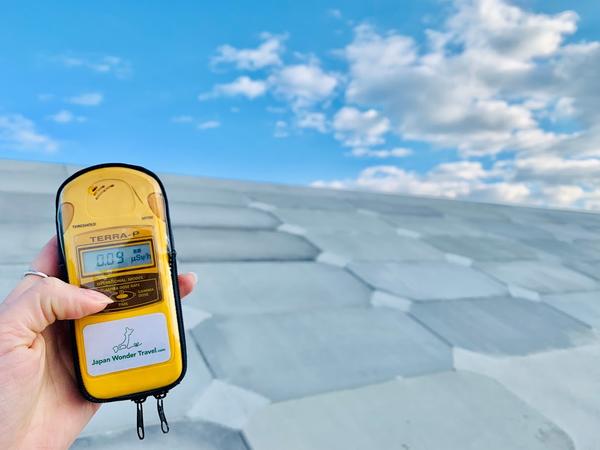
悪名高い原子力発電所に非常に近いにもかかわらず、ガイガーカウンターの読み取り値は海岸沿いでは驚くほど低かったです!
そして、東京より低かったですよ!
The government has already effectively decontaminated this area, but returnees are slow to trickle back. Looking around, one can hardly blame them: abandoned rice paddies, a few dilapidated houses, and the Ukedo Elementary School are all that remain in the wake of the 15-m high tsunami. Houses are no longer allowed to be built near the coast in Ukedo.
政府はすでにこの地域の汚染を効果的に除染していますが、帰還者は戻ってくるのが遅いです。周囲を見渡せば、彼らを非難することはほとんどできません:放棄された水田、いくつかの老朽化した家屋、請戸小学校は、すべて高さ15 mの津波の影響を受けたままです。請戸の海岸近くに家を建てることは今では許可されなくなりました。

Driving through the area, we passed by several barricaded areas where where the debris caused by tsunami and caused by demolishing the buildings are stored.
この地域を通り抜けると、災害で破損した大きな物体が保管されているいくつかのバリケード地域があります。
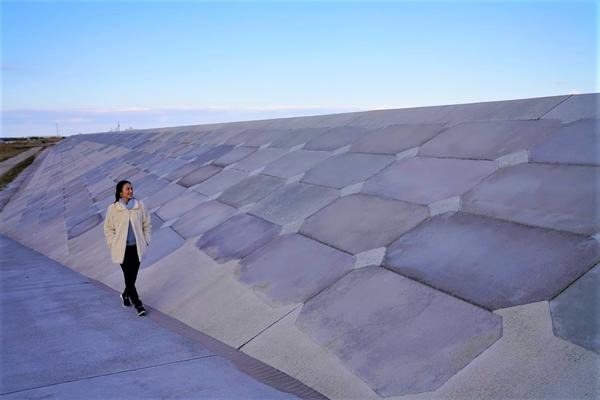
福島県は、新しい請戸護岸の背後に、復興を後押しするために、記念公園と地震、津波、核災害に関する展示館を建設する予定です。

Ukedo Elementary School is located only 300 meters away from the beach.
When the earthquake struck, there were around 80 pupils at the school.
Teachers had 8 minutes to make one of the most important decisions for the lives of their students.
To stay, or to evacuate?
As schools in Japan are designated disaster evacuation centers, the official guidelines instructed keeping the children inside. Fortunately, the teachers ignored this, and led all students to the nearby hill, Ohirayama, about 1.5km away.
請戸小学校は、ビーチからわずか300メートルの場所にあります。
残念ながら、小学生にとってこの一見楽しい場所は、2011年3月11日に最も危険な場所の1つになりました。
地震が起きたとき、学校には約80人の生徒がいました。
教師は、生徒の生活にとって最も重要な決定を行うために8分の時間を費やしました。
滞在するか、避難するか?
幸いなことに、教師はすべての生徒を約1.5 km離れた大平山の近くの丘に誘導しました。


The school clock is forever stopped at 3:38pm in the afternoon – the time that the tsunami hit and electricity was cut.
学校の時計は午後3時38分で永久に停止しています。これは津波が襲い、電気が切れた時間です。
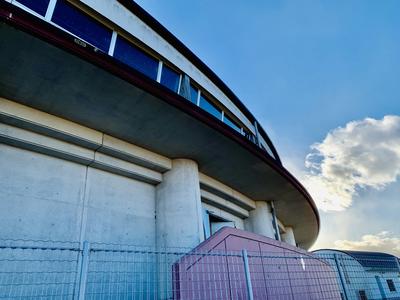
The waterline near the roof of the building marks how far up the tsunami reached.
If they had stayed in the school, everyone would have been in danger.
建物の屋根の近くの喫水線は、津波がどれほど遠くまで到達したかを示しています。
もし彼らが学校に滞在していたなら、誰もが危険にさらされていたでしょう。

View from the top of Ohirayama.
大平山の頂上からの風景。

Plaque commemorating the names of those who were lost to the tsunami at Ohirayama.
津波で亡くなった人々の名前を刻んだ記念碑。
Many of the children lost their families in the tsunami, but fortunately,
not one child or staff member from the school died in the disaster.
多くの子どもたちは津波で家族を失いましたが、幸いなことに、
ここではこの災害で子どもも学校の職員も一人も亡くなりませんでした。

I cannot even begin to imagine what those schoolchildren must have gone through after watching their homes destroyed by one of the worst tsunamis in history.
The following day, the Fukushima Daiichi Nuclear Power Plant exploded and Namie town began its evacuation.
歴史上最悪の津波の1つによって破壊された彼らの家を見た後、それらの学童が何を経験したか想像することさえできません。
翌日、福島第一原子力発電所が爆発し、浪江町の避難が始まりました。

Listening to this story whilst standing in front of the now-empty school and retracing their steps to Ohirayama is difficult and saddening, yet warms my heart with relief knowing that no lives were lost. There were other places along the east coast where the story ended far more tragically. Nonetheless, what remains of the Ukedo Elementary School serves as an important testimonial to the courage of the staff and students on that day to think and act independently.
空になった学校の前に立って大平山への道をたどりながらこの話を聞くことは辛く悲しくもありますが、命が失われなかったことを知って安心してホッとしました。 東海岸には、さらに悲劇的に物語が終わった場所が他にもありました。 それにもかかわらず、請戸小学校に残っているものは、その日、スタッフと生徒が独立して考え、行動する勇気を示す重要な証です。
Tomioka Town:
Cherish the Transient Cherry Blossoms
富岡町:桜を思い浮かべて

In April 2017, the evacuation order for 85% of Tomioka town was lifted and life is slowly starting again as people return to the area.
2017年4月、富岡町の85%の避難命令が解除され、人々がこの地域に戻ったため、生活はゆっくりと再開されました。

The government has built new houses in Tomioka for families to move into.
政府は富岡に家族が入居できる新しい家を建てました。

We met with Nakayama-san who tells us her story of life, resilience and recovery in her hometown. She shared that one of her most depressing memories after the disaster was having to obtain a special permit and wear a full protective suit to enter her own home.
富岡在住の仲山さんに会いました。
仲山さんは、故郷での生活、復興力、復興の物語を話してくれました。
彼女は、災害後の最も憂鬱な思い出の1つは、特別な許可を取得し、完全な防護服を着て自分の家に入ることでした。

In the chaotic aftermath of the disaster, abandoned houses became prime targets for thieves.
災害の混乱の余波で、廃屋は泥棒の主な標的になりました。

Identifying the Thief: Houses with windows shattered below waist-level were broken into by wild boar. Anything damaged above waist-level was broken by human robbers.
泥棒の判別の仕方:腰の高さより下に窓が砕けている家は、イノシシによって破壊されました。
腰の高さを超えて損傷した窓は、強盗によって破壊されました。

Before the disaster, Tomioka was known for the sakura (cherry blossoms) that bloom along the town’s main boulevard. Unfortunately, most of this street is still cordoned off in the Difficult-to-Return zone due to higher radioactivity levels. Only residents and workers can get special permits to enter the area for short periods of time.
富岡は、震災前、町の大通りに沿って咲く桜で知られていました。
残念なことに、この通りのほとんどは、放射線レベルが高いため、帰還困難区域ではまだ閉鎖されています。
居住者と労働者のみ、短期間でエリアへの特別な許可を得ることができます。

Looking through the barricade, I imagine it must be beautiful when the cherry trees burst in full bloom and fill the street with pink petals.
バリケードを覗くと、桜が満開になり、通りをピンク色の花びらでいっぱいになるのは美しい光景だと思います。
This year, the Sakura Festival will be held again just like before the disaster.
Nakayama-san beseeches all visitors to think of Tomioka town whenever they think of cherry blossoms. It is hoped that this festival will become the trigger to bring back the town’s vitality little by little, moving Tomioka steadily forward toward reconstruction and new urban development.
オリンピック2020前の春、震災前と同じように桜祭りが再び開催されます。
仲山さんは桜を思うたびに富岡町を思い浮かべるようにお願いします。
この祭りが町の活気を少しずつ取り戻すきっかけとなり、
富岡市が復興と新しい都市開発に向けて着実に前進することが期待されています。

Last Reflections
最後に寄せて
During my time in Japan so far, this eye-opening tour has been one of the most meaningful experiences.
Passing through grim and mysterious forgotten towns, contemplating the world before all the destruction and suffering was unleashed, really gives you a different life perspective as you explore their survival and determined recovery. This tour not only allows you to uncover stories about the disaster, but also provides you a personal, profound look into the bravery, resiliency, hope, love and compassion in the face of disaster.
これまでの日本滞在中、この目を見張るようなツアーは最も有意義な体験の1つでした。
すべての破壊と苦しみが解き放たれる前に世界を熟考し、厳しくて忘れられた町を通り抜けて、彼らが生存と断固たる復興を願うとき、あなたは本当に人生の見方が変わります。
このツアーでは、災害に関するストーリーを明らかにするだけでなく、災害に直面した際の勇気、回復力、希望、愛、思いやりを個人的に深く掘り下げることができます。

It is important to highlight that at the end of the day, the total radiation to which we were subjected to was only 0.001mSv, 100x less than a round trip flight from Tokyo to New York (which would measure a total of 0.1 mSV)!
1日の終わりに被曝した総放射線量はわずか0.001 mSvであり、東京からニューヨークへの往復飛行(合計0.1 mSVと測定される)の100分の一です!
After the tour, I have developed a newfound respect for all survivors of the Fukushima Daiichi Nuclear Accident. The decision of many to devote their lives to the recovery of their hometowns in the face of countless hardships and unknown threats is not a foolhardy one. In my mind, each and every one is a hero in his or her own right. They are selflessly focusing on the future, without being intimated by the past, working tirelessly to improve the situation. Unfortunately, prejudice against people in and from Fukushima, as well as the exaggerated perception of the impact of radiation exposure, persist.
ツアーの後、私は福島第一原発事故の生存者全員に新たに敬意を表しました。数え切れない程の困難と未知の脅威に直面して、故郷の復興に人生を捧げるという多くの決定は、無謀なものではありません。 私の考えでは、一人ひとりが英雄です。彼らは、過去を惜しむことなく、状況を改善するためにたゆまぬ努力をして、無私無欲になって未来に焦点を合わせています。 残念ながら、福島県の人々に対する偏見と、放射線被ばくの影響に対する誇張された認識が続いています。
The more we care for and support others, the more joy and light will come into our own lives.
It really seems like the beginning of a new future awaits the Fukushima Disaster Area in the years to come…
他の人を大切にし、支援すればするほど、より多くの喜びと光が私たちの生活にもたらされると信じています。
福島の被災地には、今後数年のうちに新しい未来の始まりが待ち受けているようです。


| About the Tour || ツアーについて <Fukushima Disaster Area DAY TOUR from Tokyo> <Fukushima Disaster Area TWO-DAY TOUR from Tokyo> |


